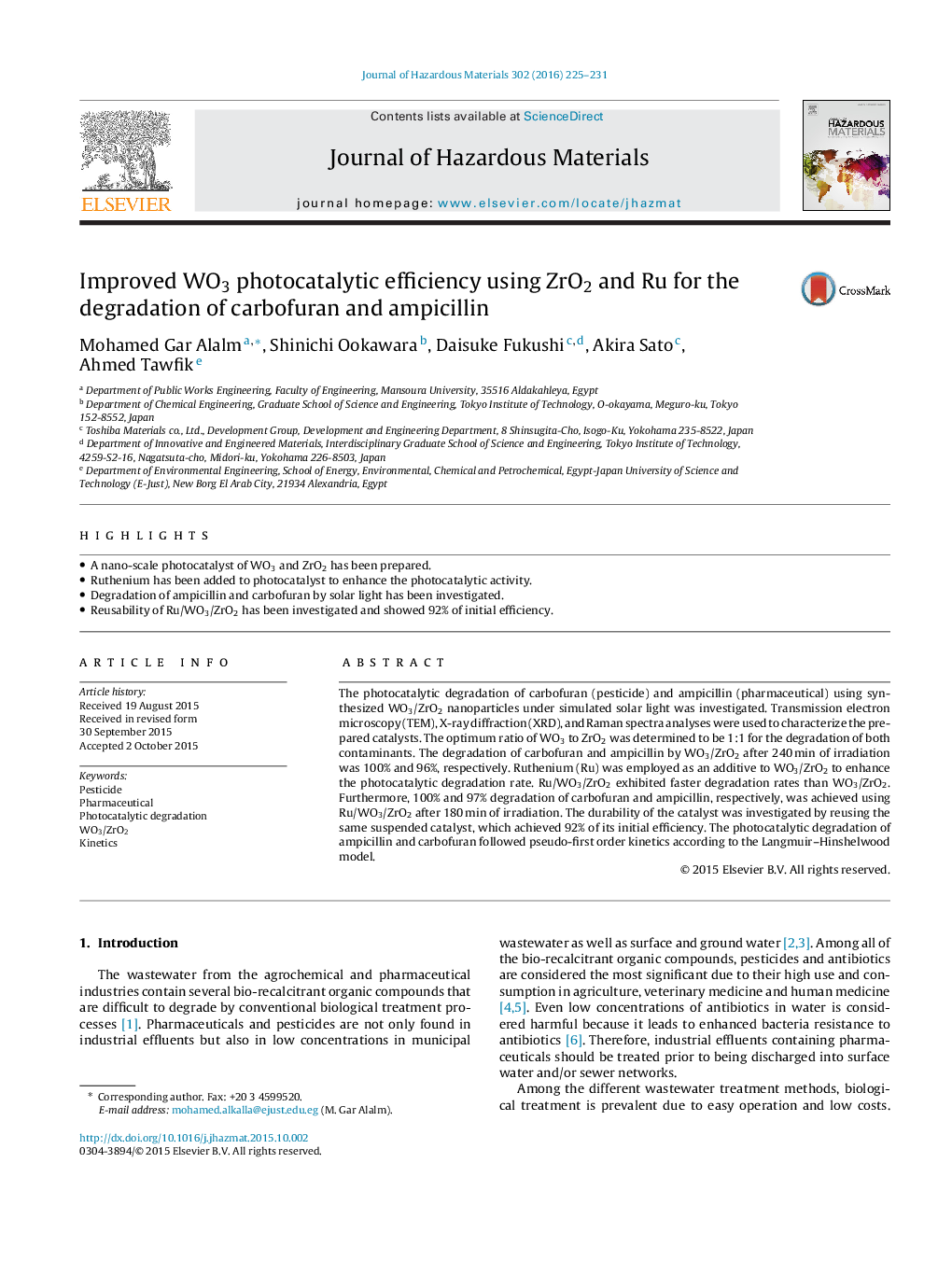| Article ID | Journal | Published Year | Pages | File Type |
|---|---|---|---|---|
| 575614 | Journal of Hazardous Materials | 2016 | 7 Pages |
Abstract
The photocatalytic degradation of carbofuran (pesticide) and ampicillin (pharmaceutical) using synthesized WO3/ZrO2 nanoparticles under simulated solar light was investigated. Transmission electron microscopy (TEM), X-ray diffraction (XRD), and Raman spectra analyses were used to characterize the prepared catalysts. The optimum ratio of WO3 to ZrO2 was determined to be 1:1 for the degradation of both contaminants. The degradation of carbofuran and ampicillin by WO3/ZrO2 after 240Â min of irradiation was 100% and 96%, respectively. Ruthenium (Ru) was employed as an additive to WO3/ZrO2 to enhance the photocatalytic degradation rate. Ru/WO3/ZrO2 exhibited faster degradation rates than WO3/ZrO2. Furthermore, 100% and 97% degradation of carbofuran and ampicillin, respectively, was achieved using Ru/WO3/ZrO2 after 180Â min of irradiation. The durability of the catalyst was investigated by reusing the same suspended catalyst, which achieved 92% of its initial efficiency. The photocatalytic degradation of ampicillin and carbofuran followed pseudo-first order kinetics according to the Langmuir-Hinshelwood model.
Related Topics
Physical Sciences and Engineering
Chemical Engineering
Chemical Health and Safety
Authors
Mohamed Gar Alalm, Shinichi Ookawara, Daisuke Fukushi, Akira Sato, Ahmed Tawfik,
